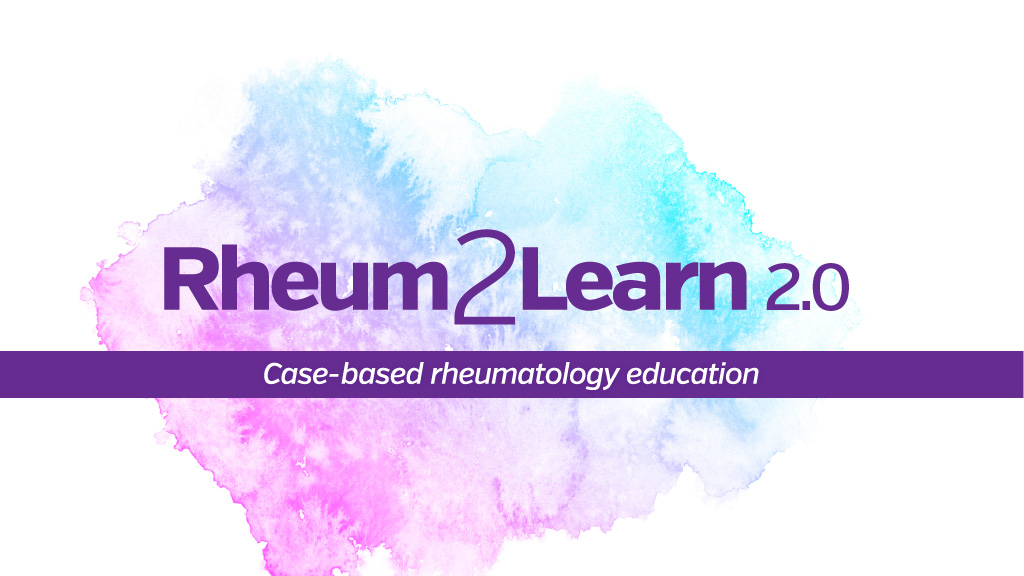
Rheum2Learn 2.0: Crystalline Arthritis
Activity Overview
Rheum2Learn 2.0 is case-based, fundamental clinical rheumatology education for residents. Each interactive activity includes three patient cases that focus on the care and assessment of individuals with rheumatologic diseases.
Crystalline arthritis can manifest in diverse clinical settings such as primary care offices, urgent care facilities, or hospital wards. Therefore, it is crucial to ensure accurate diagnosis and apply appropriate treatment algorithms. This activity provides participants an opportunity to recognize the clinical presentations, interpret test results, list differential diagnosis, and enumerate treatment options for patients with crystalline arthritis. The cases in this activity cover topics such as monoarticular arthritis, polyarthritis, and gout.
Rheum2Learn 2.0 Series
This activity is part of a series. See the other activities in the series below.
Rheum2Learn 2.0: Infectious ArthritisRheum2Learn 2.0: Inflammatory MyopathiesRheum2Learn 2.0: Musculoskeletal ExaminationRheum2Learn 2.0: OsteoarthritisRheum2Learn 2.0: OsteoporosisRheum2Learn 2.0: Pediatric RheumatologyRheum2Learn 2.0: Rheumatoid ArthritisRheum2Learn 2.0: Rheumatic Manifestations of Systemic DiseaseRheum2Learn 2.0: Sjögren’s DiseaseRheum2Learn 2.0: Systemic Lupus ErythematosusRheum2Learn 2.0: Systemic SclerosisRheum2Learn 2.0: Systemic VasculitisRegistration is complimentary.
Target Audience
Residents in training who may provide care for patients with rheumatic diagnoses in primary care, inpatient, critical care, and other clinical contexts.
The activity may also be of interest to medical students, fellows in training, advanced practice providers, practicing physicians, and other health care professionals who seek to strengthen their clinical knowledge of rheumatic diseases.
Learning Objectives
Upon completion of this activity, participants should be able to:
- Create a differential diagnosis for acute monoarticular arthritis
- Recognize the need for urgent arthrocentesis
- Correctly identify appropriate treatment for acute uncomplicated gout
- Identify indications for initiation of chronic urate lowering therapy
- Recognize the clinical presentation of acute flare of polyarticular gout
- Identify risk factors for gout
- Create a differential diagnosis for acute inflammatory polyarthritis
- Create an effective management plan for a patient with an acute flare of polyarticular gout
- Recognize the clinical presentation of a patient with chronic polyarticular, erosive, tophaceous gout
- Create an effective management plan for a patient with gout in the context of chronic kidney disease
CE & MOC Information
This activity is not eligible for CME/MOC.
Acknowledgement of Commercial Support
No commercial support was provided for this activity.
Educational Activity Policies
See ACR educational activity policies, including the online enduring activity refund policy.